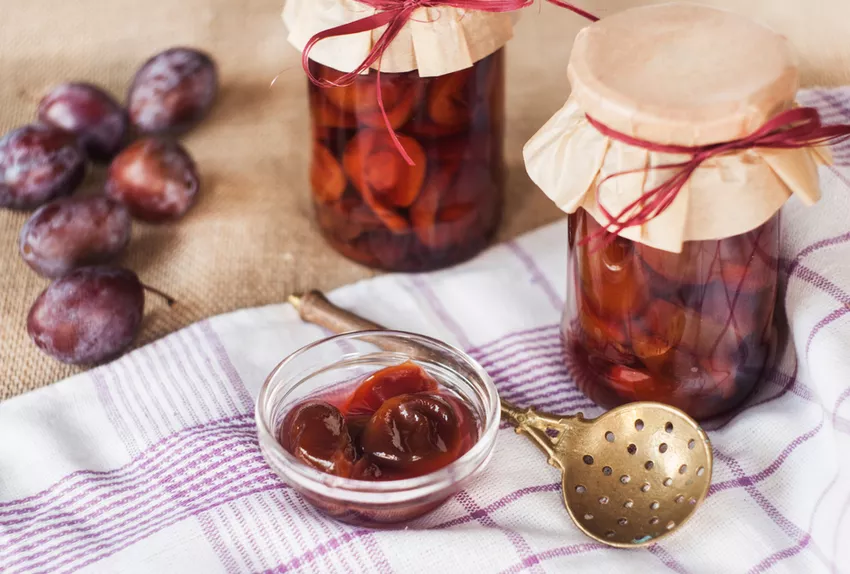At harvest time you can buy plums cheaply and stock up on compote for the winter. Hobby gardeners also usually preserve their plum harvest that is not consumed immediately, since ripe plums do not keep for very long.
 Plums are best preserved when cut in half
Plums are best preserved when cut in half
Plums or plums?
The two types of fruit are similar, but not identical. Plums are round and juicy, damsons tend to be elongated and somewhat firmer. That's why plums are also better suited as a cake topping because they don't lose as much juice when baking.
When canning, the differences between the two fruits are insignificant. Plums and damsons are preserved in the same way.
Boil plums
If you want to preserve plums, you should pick or buy the fruit fresh.
- Sterilize your mason jars, including lids and rubbers, in boiling water or all glass parts for 10 minutes in the oven at 100 degrees.
- Wash the plums thoroughly.
- Halve the fruit and remove the stone.
- Watch out for rot and bruises. These fruits are removed.
- Layer the plum halves in the jar, skin side up. Leave about 2 cm free around the edge of the glass.
- Boil a syrup of sugar and water to fill up the jars. For a kilo of plums, 1 liter of water and 1 pound of sugar is enough.
- If you want something special, you can substitute red wine for water.
- Also add spices, such as a cinnamon stick, to the broth.
- Bring everything to a boil and pour the stock over the plums until they are covered.
- Seal the jars.
Waking up in the preserving machine
Do not place the jars too close together in the preserving machine and fill the jars up to halfway with water. Wake up the plums at 90 degrees for 60 minutes. Let the glasses rest in the cauldron for a while and then place them covered on the worktop. Here the wake-up goods should cool down undisturbed for 24 hours.
Wake up in the oven
To do this, preheat the oven to 100 degrees. The glasses go into the drip pan and you pour about 2 cm of water. Then cook the plums at 75 degrees for 60 minutes.
Here, too, the glasses cool down in the oven and then rest covered on the worktop.